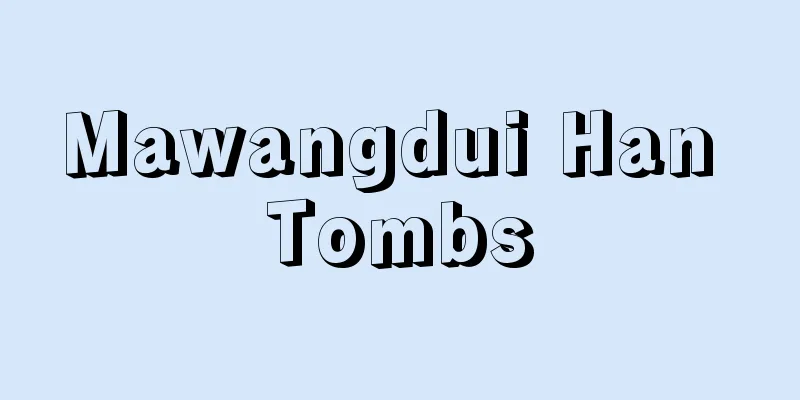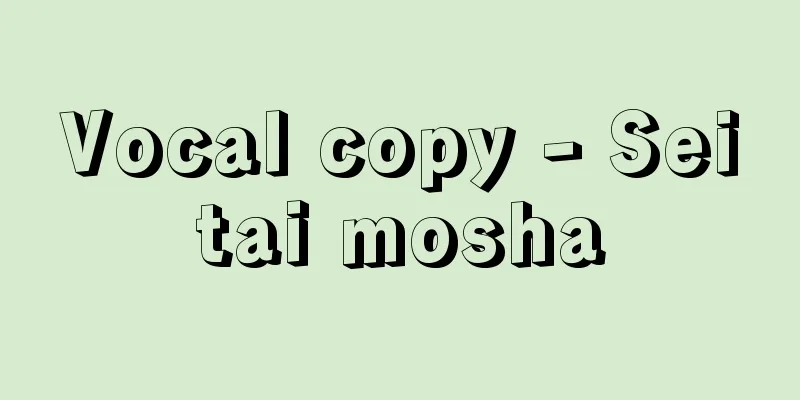Mawangdui Han Tombs

|
Excavations from 1972 to early 1974 uncovered three Han tombs in Mawangdui, a suburb of Changsha, Hunan Province, China. Tomb No. 1 is believed to date back to the reign of Emperor Wen and Emperor Jing, before Emperor Wu, because of the "half liang" mud coins that were unearthed in it, and investigations have led to the prevailing opinion that it dates back to 168 BC during the reign of Emperor Wen. Many mud seals bearing the inscription "Li Hou Family Secretary" were found in the tomb, so this tomb is related to Li Hou. Tomb No. 1 contained an almost complete female corpse, with the soft tissues of skin and flesh and the internal organs well preserved. The painted silk covering the coffin was also a gorgeous silk fabric, and three types of musical instruments and newly made lacquerware were also found. In December 1973, Tomb No. 3 was excavated and silk scrolls were found there. They included classics such as "Laozi," "Strategies of the Warring States," and "Zuo Zhuan," maps such as "Map of the Garrison," medical books such as "Fifty-two Diseases," and other works on astronomy and yin-yang. Among them, two types of copies of the "Laozi" were excavated. The first volume of the "Laozi" and the four later volumes of ancient lost books are combined to form one volume. It has 465 lines and over 13,000 characters, and its style is close to seal script. Since it does not avoid the name of Gaozu (reigned 202-195 BC), it must have been copied at the very end of his reign. The second volume of the "Laozi" is copied into one silk scroll together with the first four volumes of ancient lost books, and contains 252 lines and over 16,000 characters. Since it avoids the name of Emperor Gaozu but does not avoid that of Emperor Hui (reigned 195-188 BC), it is estimated to be from the time of Emperor Hui or Empress Lü. The silk scroll "Laozi" has the Dejing in the first half and the Daojing in the second half, which is reversed from the Tongxing version. The tomb owner of Tomb No. 3 is estimated to be a son of Lihou Lisao, and the silk scroll was folded and placed in the lower part of a rectangular lacquered box (No. 57) in a box on the east side of the tomb chamber. Tomb No. 2 had been robbed, but the "Li Cang" jade seal and the "Li Marquis Family Vice-Chancellor" and "Changsha Prime Minister" bronze seals were excavated. Silk paintings were discovered in Tomb No. 1, which are noteworthy in the history of painting and provide new and important information about ancient Chinese mythology. The T-shaped paintings resemble clothing, and the images depicted are said to "represent the wish to summon the spirit and return it to the body." Chinese researchers say this is a reflection of the Chu region's custom of believing in ghosts. 38 weapons and a map of military garrison were excavated from Tomb No. 3. The weapons were eight types: crossbows, bows, arrows, quivers, swords, halberds, spears, and weapon racks, but they were made as Ming ware and were not for practical use. The map of military garrison is a valuable resource for surmising the military situation in the early Han dynasty. Mountains, rivers, roads, towns, villages, and barracks are drawn on the map. A closer look at them reveals that measures such as relocation and annexing villages were taken due to the need for military defense. In this way, maps are valuable materials for the study of social history during the Han dynasty. [Takashi Yoshinami] “Changsha Mawangdui Ichigo Han Tomb” edited by Hunan Provincial Museum and Institute of Archeology, Chinese Academy of Sciences, translated by Yu Sekino et al. (1976, Heibonsha) [References] | |Source: Shogakukan Encyclopedia Nipponica About Encyclopedia Nipponica Information | Legend |
|
1972年から74年初めまでの発掘で、中国湖南省長沙(ちょうさ)市郊外の馬王堆から発見された三座の漢墓。1号墓は泥「半両」銭が出土しているところから、武帝以前、文帝、景帝代にさかのぼるものとみられ、考証によって、文帝代の紀元前168年のものと推定する意見が有力である。墓中には「軑侯家丞(たいこうけじょう)」と記す封泥(ふうでい)が多く発見されるので、この墓は軑侯に関係するものである。1号墓にはほとんど完全な女性の屍(しかばね)があり、皮・肉の軟組織と内臓が良好に保たれていた。また、棺を覆う彩絵帛(はく)画は絢爛(けんらん)たる絹織品であり、3種の管弦楽器や製作したばかりの輝きをもつ漆器などもみいだされた。1973年12月、3号墓が発掘され、ここに帛書が発見された。すなわち、『老子』『戦国策』『左伝』などの古典、『駐軍図』などの地図類、『五十二病方』などの医書、その他、天文、陰陽(おんみょう)の書など、広い分野にわたっての写本があった。なかでも『老子』は2種類の写本として出土した。『老子』甲本と巻後の四編の古佚書(こいっしょ)をあわせて一巻になっている。465行、1万3000余字、字体は篆書(てんしょ)に近い。漢の高祖(在位前202~前195)の諱(いみな)を避けていないので、古くみても高祖の末年のころに写出されたものであろう。『老子』乙本は前の四編の古佚書とあわせて一つの帛に写されており、252行、1万6000余字を含む。高祖の諱を避け、恵帝(在位前195~前188)のそれを避けていないので、恵帝あるいは呂后(りょこう)時代のものかと推定される。帛書『老子』は徳経が前半にあって、道経が後半にあり、通行本と順序が転倒している。3号墓の墓主は軑侯利蒼(りそう)の男子と推定され、帛書は墓室の東辺箱(しょう)にある(57号)長方形の漆塗りの奩(はこ)の下部に折り畳んで収められていた。 2号墓は盗掘されていたが、「利蒼」玉印、「軑侯家丞」「長沙丞相」銅印などが出土した。 帛画は1号墓から発見されているが、これらは絵画史上からも注目に値するとともに、中国古代神話についての新しい重要な資料を提供することになった。T字形画幅は衣服に似せていて、描かれた形象は「招魂して身体に戻す願いを表すもの」といわれる。これは楚(そ)の地方の巫鬼(ふき)を信仰する習俗の反映であろうと中国の研究者は述べている。3号墓からは38件の兵器と、『駐軍図』が出土した。兵器は弩(ど)、弓、箭(せん)、矢箙(しふく)、剣、戈(か)、矛(ほこ)、兵器架の8種であるが、明器(めいき)としてつくられたので実用の器物ではない。『駐軍図』は漢代初期の軍事情況を推察するうえで貴重な資料である。図には山、河、道、城鎮、村、兵営が書き込まれている。それらを詳しくみると、軍事駐防の必要から、移民、併村というような措置もとられたことがわかる。このように地図類は漢代の社会史研究の材料として貴重である。 [好並隆司] 『湖南省博物館・中国科学院考古研究所編、関野雄他訳『長沙馬王堆一號漢墓』(1976・平凡社)』 [参照項目] | |出典 小学館 日本大百科全書(ニッポニカ)日本大百科全書(ニッポニカ)について 情報 | 凡例 |
<<: Maoke Mountain Range (English spelling) Pegunungan Maoke
Recommend
Lauric acid - Laurinsan (English spelling) lauric acid
A saturated fatty acid. Also known as dodecanoic ...
Yasutaka Okamoto
1797-1878 A Japanese classics scholar from the la...
Bathing in the water - gyozui
Washing away sweat and dust from the body with ho...
Impulsive action
…Pathological disorders of motivation are collect...
Kirkwaif Dynasty - Kirkwaif Dynasty
...An ancient name for the mountainous region on ...
Minamoto no Yukiie - Yukiie of Minamoto
A military commander from the end of the Heian pe...
Yamatokoriyama [city] - Yamatokoriyama
Nara City is located in the northwest of Nara Pref...
rayon pulp
…Pulp can be used in two ways: when it retains it...
Electric vehicle - denki jidousha (English spelling)
A car that runs on an electric motor powered by e...
Tokyo Shimbun - Tokyo Shimbun
A daily newspaper published by the Tokyo headquar...
minestrone
...The most well-known examples are the Parisien,...
Internetwork - Internetwork
…An internetwork, or the Internet, is a network o...
Kakei Asada
?-? A Joruri composer from the mid-Edo period. As...
Representative lawsuit - Daihyososho
A lawsuit brought by shareholders as plaintiffs on...
Book lung - Shohai (English spelling) book-lung
A unique respiratory organ found in the order Sco...









